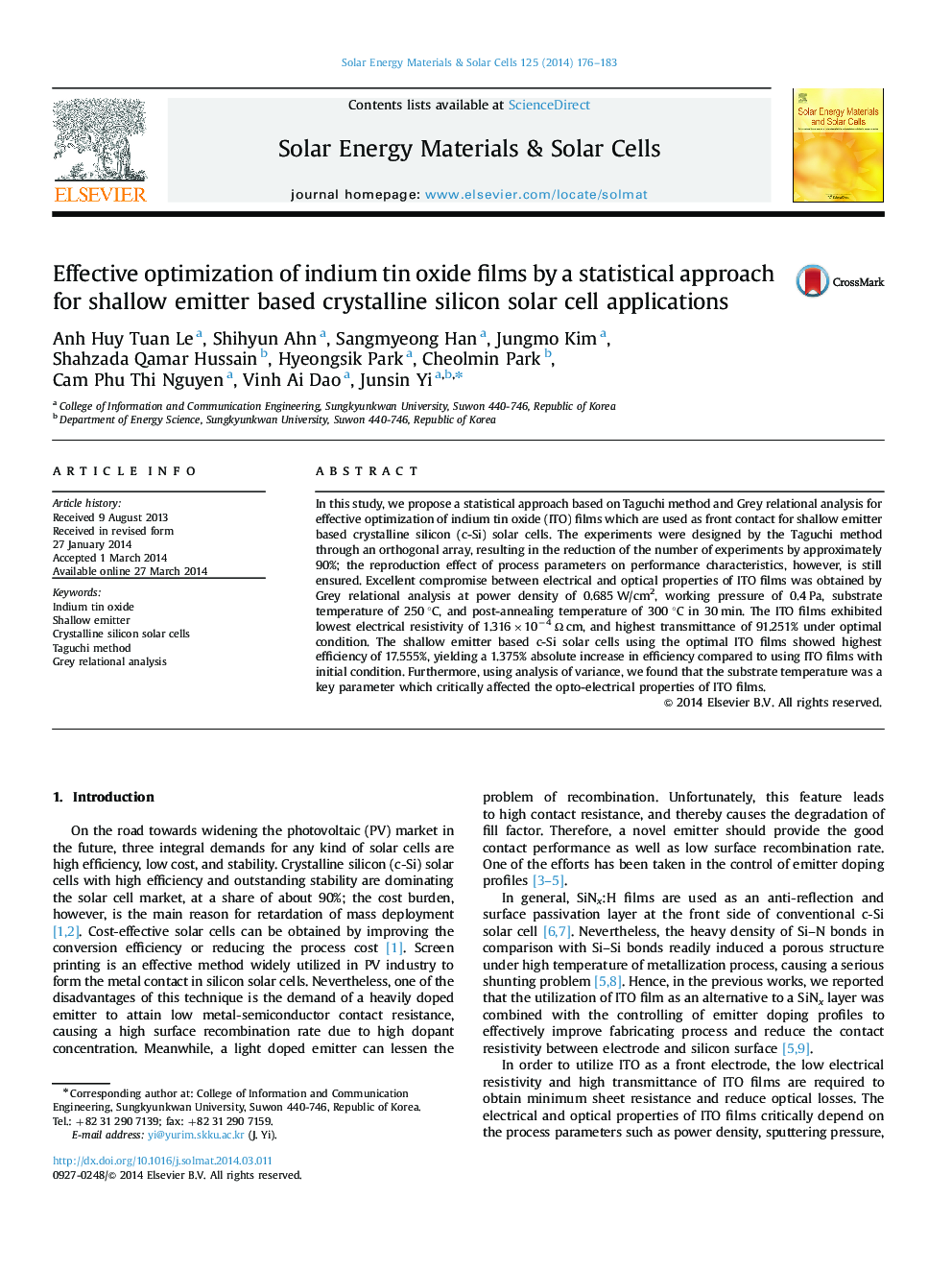| Article ID | Journal | Published Year | Pages | File Type |
|---|---|---|---|---|
| 78099 | Solar Energy Materials and Solar Cells | 2014 | 8 Pages |
•ITO front contact plays a critical role in shallow emitter based c-Si solar cells.•The number of experiments was reduced by approximately 90% using Taguchi design.•The optimal condition of ITO films was obtained by Grey relational analysis.•Shallow emitter based c-Si solar cell efficiency increased by 1.375% absolutely.
In this study, we propose a statistical approach based on Taguchi method and Grey relational analysis for effective optimization of indium tin oxide (ITO) films which are used as front contact for shallow emitter based crystalline silicon (c-Si) solar cells. The experiments were designed by the Taguchi method through an orthogonal array, resulting in the reduction of the number of experiments by approximately 90%; the reproduction effect of process parameters on performance characteristics, however, is still ensured. Excellent compromise between electrical and optical properties of ITO films was obtained by Grey relational analysis at power density of 0.685 W/cm2, working pressure of 0.4 Pa, substrate temperature of 250 °C, and post-annealing temperature of 300 °C in 30 min. The ITO films exhibited lowest electrical resistivity of 1.316×10−4 Ω cm, and highest transmittance of 91.251% under optimal condition. The shallow emitter based c-Si solar cells using the optimal ITO films showed highest efficiency of 17.555%, yielding a 1.375% absolute increase in efficiency compared to using ITO films with initial condition. Furthermore, using analysis of variance, we found that the substrate temperature was a key parameter which critically affected the opto-electrical properties of ITO films.
Graphical abstractFigure optionsDownload full-size imageDownload as PowerPoint slide
